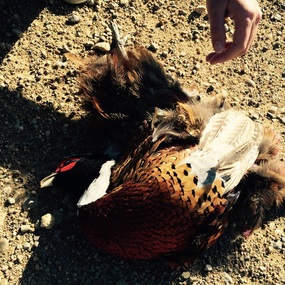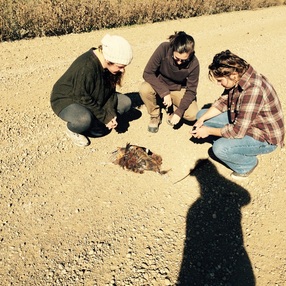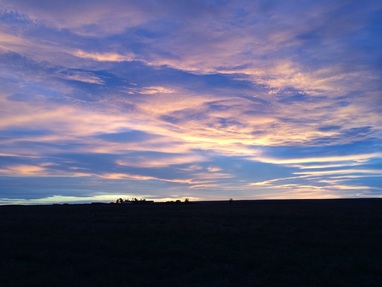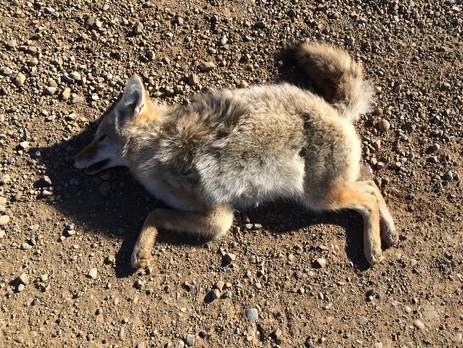The prairie awes me. Every day I run into something unexpected and raw. A few days ago during a sunrise birding session, we found the remains of a huge bird, its feathers impossibly large. We later identified it as a golden eagle.
On the way back from a scoping session, a great horned owl kept pace with the car at sunset, silhouetted against the orange horizon. Perching on a tree by the road it shrieked, a call-and-response with the lowing cattle nearby.
The depth of the human dimension on this landscape also fascinates me—from the homesteaders to the natives who lived here before them. We see and feel evidence of both.
I found an arrowhead while walking Transect 6, a small, glassy triangle with worked edges, dull now. We’ve visited Medicine Rock, a huge pinkish stone covered in ancient petroglyphs and lichen where people still come to leave their prayers.
Some of the things we find are saddening. In one day, Kim and I found a female coyote that was hit by a car on Regina Road, as well as a badger and a ring-necked pheasant. Fall is a time of increased roadkill, with many animals migrating, looking for mates, or escaping hunters.
Without fur, she was tiny and lean, nothing more than muscle and small brown eyes, a shattered shoulder and leg. I’ve seen nothing more beautiful that her wiry black-tipped tail, the reddish flanks. And the face: ears so soft, eyelashes and whiskers still intact.
Each of the Landmark crewmembers has applied a similar process to the prairie itself: We are peeling away its layers, respectfully, attentively, in wonder. It cannot be understood at first glance or from afar, and we want to know what is beneath the surface.
Learn more this and other ASC projects on our website, the Field Notes blog, and by following us on Facebook, Twitter, Instagram and Google+.





